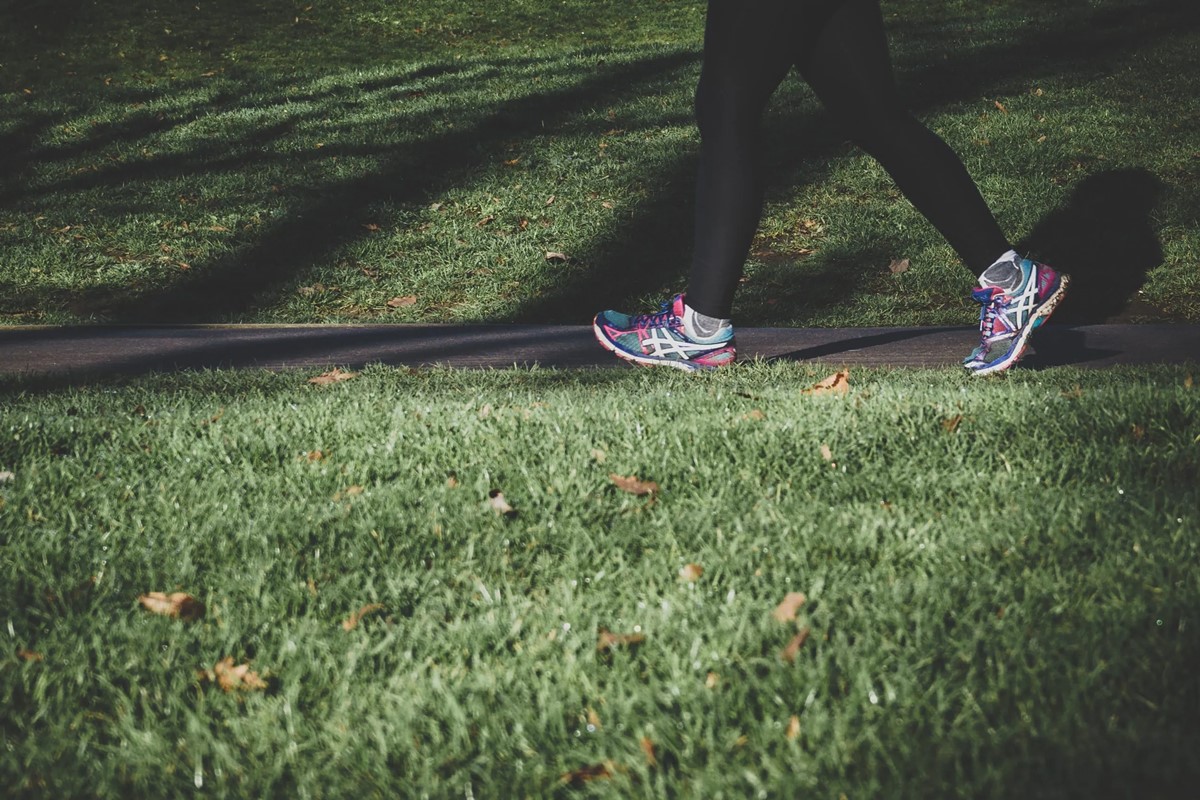Home>Misc>Featured>How Does Altitude Affect Athletic Performance


Featured
How Does Altitude Affect Athletic Performance
Modified: January 2, 2024
Discover how altitude impacts athletic performance and gain insights from featured athletes on the challenges and benefits of training at higher elevations.
Introduction
Welcome to the ultimate guide on how altitude affects athletic performance. Altitude, defined as the elevation above sea level, can have a significant impact on the performance and abilities of athletes. Whether you’re a professional athlete, a weekend warrior, or simply interested in the science behind athletic performance, understanding the effects of altitude is crucial.
Altitude is a parameter that varies from location to location, and with each increase in elevation, the air becomes thinner. This decrease in air density leads to reduced oxygen availability, presenting a unique set of challenges for athletes.
In this comprehensive article, we will explore the physiological changes that occur at high altitudes, the effects of altitude on both aerobic and anaerobic performance, as well as different altitude training methods. We will also discuss the benefits and drawbacks of altitude training, altitude’s impact on recovery and injury risk, and provide strategies for adjusting to altitude. By the end of this guide, you will have a deep understanding of how altitude affects athletic performance and be equipped with the knowledge to optimize your training and performance at altitude.
Definition of Altitude
Altitude refers to the measurement of height or elevation above a specific reference point, typically sea level. It is an important parameter to consider when studying the effects of altitude on athletic performance. Altitude levels can range from low to high, with each level presenting different challenges and physiological changes.
At sea level, the air is denser and contains a higher concentration of oxygen compared to higher altitudes. As an athlete ascends to higher altitudes, the air becomes thinner, meaning there is less oxygen available for the body to utilize during exercise.
Altitude is typically measured in feet or meters and can vary greatly depending on the location. High altitude is generally classified as any elevation above 5,000 feet (1,500 meters), while very high altitude refers to elevations above 9,000 feet (2,700 meters). Extreme altitudes, also known as the ‘death zone,’ are above 26,000 feet (8,000 meters) and are only accessible to experienced mountaineers.
It’s important to note that altitude is not solely determined by geographic location. Factors such as weather patterns and geographic features can influence the elevation at which an athlete is training or competing. Understanding the specific altitude conditions in a given location is crucial for athletes seeking to optimize their performance.
Now that we have a clear understanding of what altitude is, let’s dive into how it affects the human body and its impact on athletic performance.
Physiological Changes at High Altitudes
When athletes train or compete at high altitudes, their bodies undergo a series of physiological changes in order to adapt to the decreased oxygen availability. Understanding these changes is crucial for athletes looking to optimize their performance in high-altitude environments.
One of the primary adaptations that occur at high altitudes is an increase in the production of red blood cells. This is known as erythropoiesis and is the body’s natural response to the lower oxygen levels. The increase in red blood cells allows for a higher oxygen-carrying capacity, helping to deliver oxygen to the muscles more efficiently. This adaptation is particularly beneficial for endurance athletes, as it can enhance aerobic performance.
In addition to increased red blood cell production, the body also experiences an increase in lung ventilation at high altitudes. This is a result of the lower oxygen partial pressure in the air, causing the body to work harder to extract and transport oxygen to the muscles. As a result, athletes may experience an increase in breathing rate and a sensation of “heavy” or “labored” breathing.
Another notable physiological change at high altitudes is the stimulation of capillary growth and increased blood flow to the muscles. This allows for improved oxygen delivery and nutrient uptake, supporting muscle function and performance. However, it is important to note that these adaptations take time to develop, and athletes may experience a decrease in performance initially due to the body’s adjustment period.
In addition to these adaptations, high altitude exposure can also lead to an increase in the production of certain hormones, such as erythropoietin (EPO) and growth hormone. These hormones play a role in the body’s adaptation to altitude, promoting red blood cell production and muscle growth, respectively.
It’s important to recognize that individual responses to high altitude can vary. Some athletes may adapt more quickly and effectively than others, and there may also be genetic factors that influence an athlete’s ability to acclimatize to altitude. Proper acclimatization and training strategies are essential to optimize an athlete’s performance in high-altitude environments.
Effects of Altitude on Aerobic Performance
Altitude significantly impacts aerobic performance, which refers to endurance-based activities that require the body to use oxygen as the primary energy source. The decrease in oxygen availability at high altitudes poses unique challenges for athletes, affecting their cardiovascular system, energy production, and overall performance.
One of the main effects of altitude on aerobic performance is a decrease in the maximal oxygen uptake, also known as VO2 max. VO2 max represents the maximum amount of oxygen that an individual can utilize during exercise. As altitude increases, the lower oxygen partial pressure in the air restricts the amount of oxygen available for the working muscles. This reduction in oxygen uptake can lead to a decrease in aerobic capacity and endurance performance.
Additionally, the lower oxygen availability at high altitudes can result in an increased reliance on anaerobic energy systems. The body shifts towards anaerobic metabolism when there is a lack of sufficient oxygen to produce energy aerobically. This can lead to an earlier onset of fatigue and a decrease in overall performance.
Altitude also impacts the cardiovascular system, particularly the heart rate response during exercise. As the body adjusts to the lower oxygen levels, the heart rate typically increases to compensate for the reduced oxygen-carrying capacity of the blood. This increased heart rate can make exercise at altitude feel more strenuous, even at lower intensities compared to sea level.
Furthermore, altitude can affect thermoregulation, or the body’s ability to regulate temperature during exercise. At higher altitudes, the air is generally colder, which can impact an athlete’s ability to maintain optimal body temperature. This can lead to increased energy expenditure and potential performance decrements.
Despite these challenges, athletes can employ various strategies to mitigate the effects of altitude on aerobic performance. Gradual exposure to altitude, as well as proper acclimatization and training, can help the body adapt and improve its ability to utilize oxygen efficiently. When preparing for competitions at high altitudes, athletes may also consider arriving early to allow for proper adaptation and adjustment.
Understanding the effects of altitude on aerobic performance is crucial for athletes looking to optimize their training and performance in high-altitude environments. By implementing appropriate strategies and training methods, athletes can overcome the challenges and excel in aerobic-based activities at altitude.
Effects of Altitude on Anaerobic Performance
While altitude primarily affects aerobic performance, it also has implications for anaerobic performance, which involves high-intensity, short-duration activities that rely on energy systems other than oxygen. Understanding the effects of altitude on anaerobic performance is important for athletes participating in sports or activities that involve intense bursts of speed, power, and strength.
One of the key effects of altitude on anaerobic performance is a decrease in power and muscular force production. The reduced oxygen availability at higher altitudes hampers the body’s ability to generate energy quickly, resulting in a decrement in explosive movements and short-duration maximal efforts. Athletes may experience a decrease in sprinting speed, jump height, and overall power output compared to sea level.
Altitude can also impact the buffering capacity of the muscles, leading to an increased perception of muscular fatigue and a shortened time to exhaustion during intense anaerobic exercise. The ability to clear metabolic byproducts, such as lactate, becomes impaired at altitude, which can hinder performance in activities that require repeated high-intensity efforts.
Along with the decrement in power and buffering capacity, a decrease in muscular strength may also be observed at high altitudes. This is due to the body’s natural response to altitude, which is to conserve energy and adjust to the lower oxygen levels. As a result, athletes may experience a decline in their ability to lift heavy weights and generate maximal strength.
It’s worth noting that the effects of altitude on anaerobic performance can vary among individuals. Some athletes may be more resilient to the challenges posed by altitude, while others may experience a more significant decline in anaerobic capabilities. Factors such as acclimatization, genetics, and training history play a role in determining an athlete’s response to altitude.
To mitigate the effects of altitude on anaerobic performance, athletes can incorporate specific training strategies. Interval training, including short bursts of high-intensity efforts with adequate recovery, can help maintain anaerobic capacity and improve performance at altitude. It is also essential to gradually adjust to the altitude and allow for proper acclimatization to improve the body’s ability to adapt to the unique environment.
Understanding how altitude affects anaerobic performance will enable athletes to tailor their training and competition strategies to maximize their potential in altitude conditions. By implementing appropriate training methods and understanding the limitations, athletes can optimize their performance in anaerobic-based activities at high altitudes.
Altitude Training Methods
Altitude training is a popular method used by athletes to enhance performance and improve various physiological adaptations. By exposing the body to reduced oxygen levels, athletes can trigger specific adaptations that can lead to improved performance at both altitude and sea level. There are several altitude training methods that athletes can utilize to reap the benefits of altitude training.
One common method is live high, train high (LHTH), which involves living and training at high altitudes for an extended period of time. This approach allows athletes to experience the physiological challenges of altitude on a daily basis and gradually adapt to the decreased oxygen environment. LHTH is particularly beneficial for endurance athletes who rely heavily on aerobic capacity.
Another approach is live high, train low (LHTL), which involves living at high altitudes but training at lower altitudes where oxygen availability is higher. By exposing the body to high altitudes while maintaining the ability to train at higher intensity levels, athletes can improve their aerobic capacity while still benefiting from the higher oxygen availability during training. LHTL is often employed by athletes who require both aerobic and anaerobic performance.
Intermittent hypoxic training (IHT) is another popular altitude training method. It involves periodically exposing the body to intermittent periods of reduced oxygen levels, typically through simulated altitude environments or hypoxic chambers. This method allows athletes to experience the physiological stress of altitude without the need to relocate to high-altitude locations. IHT can be performed during specific training sessions or incorporated into an athlete’s regular training routine.
Lastly, there is also the option of using altitude training masks or nasal dilator strips. These devices restrict airflow and simulate the feeling of training at high altitudes. While they may not provide the same physiological adaptations as training at true altitude, they can still serve as a useful tool for athletes looking to add an additional challenge to their training and improve aerobic capacity.
It’s important to note that altitude training methods should be approached with caution and under the guidance of a qualified professional. Altitude training can place additional stress on the body and if not properly managed, can lead to overtraining or other negative health effects.
By incorporating altitude training methods into their training routine, athletes can experience improvements in aerobic capacity, red blood cell production, and other physiological adaptations. Understanding the different approaches to altitude training and tailoring them to individual needs can help athletes optimize their performance and reach new heights in their athletic pursuits.
Benefits and Drawbacks of Altitude Training
Altitude training offers a range of potential benefits for athletes looking to improve their performance. However, it is important to consider both the advantages and drawbacks of altitude training before incorporating it into a training regimen.
One of the key benefits of altitude training is its ability to stimulate physiological adaptations. Training at high altitudes stimulates the production of red blood cells, increasing the oxygen-carrying capacity of the blood. This can lead to improved aerobic performance, endurance, and overall athletic capabilities. Altitude training has also been shown to enhance lung function and increase the efficiency of oxygen utilization, allowing athletes to utilize oxygen more effectively during exercise.
Another advantage of altitude training is the potential for improved mental resilience. Training at high altitudes presents unique challenges and requires athletes to push through discomfort and adapt to the physiological stress. This can contribute to mental toughness, discipline, and the ability to perform under challenging conditions. Altitude training can also provide a change of scenery and training environment, which can help break up monotony and inject new motivation into an athlete’s training routine.
However, altitude training also comes with its drawbacks and considerations. One of the main challenges is the risk of overtraining or insufficient recovery. Training at high altitudes places additional stress on the body, and if not adequately managed, it can lead to fatigue, decreased performance, and an increased risk of injury. It is crucial for athletes to listen to their bodies, prioritize recovery, and implement appropriate training load and intensity.
Altitude training can also be logistically challenging and expensive. It often requires athletes to travel to high-altitude destinations or invest in specialized equipment or facilities, such as hypoxic chambers. Additionally, the time needed for proper acclimatization can impact an athlete’s training schedule and competition calendar.
Furthermore, individual responses to altitude training can vary greatly. Some athletes may be more responsive and show significant improvements, while others may not experience the same level of adaptation. Genetic factors, training history, and individual physiology can all influence an athlete’s response to altitude training.
It’s also important to consider the potential risks of altitude training, such as altitude sickness. While uncommon, altitude sickness can occur when the body fails to acclimatize properly to higher elevations, resulting in symptoms such as headache, nausea, fatigue, and difficulty sleeping. Athletes should prioritize proper acclimatization and consult with healthcare professionals before engaging in altitude training.
Understanding the benefits and drawbacks of altitude training is essential for athletes considering this method to enhance their performance. By carefully weighing the advantages and challenges, and implementing proper training protocols, athletes can maximize the benefits of altitude training and minimize the potential drawbacks.
Altitude’s Impact on Recovery and Injury Risk
Altitude has a significant impact on an athlete’s recovery process and the risk of injury. The unique conditions present at high altitudes can both enhance and hinder recovery, as well as influence the likelihood of sustaining injuries.
One of the notable effects of altitude on recovery is the potential for delayed muscle recovery. Training at high altitudes places additional stress on the body, and the reduced oxygen availability can slow down the repair and rebuilding of muscle tissue. Athletes may experience increased muscle soreness and a longer recovery time compared to training at sea level. It is crucial for athletes to prioritize rest, proper nutrition, and adequate sleep to optimize recovery and minimize the risk of overtraining.
Altitude also impacts the body’s ability to recover by affecting sleep quality. Many athletes report difficulty sleeping at high altitudes due to factors such as increased ventilation and changes in atmospheric pressure. Poor sleep quality can impair recovery and negatively impact an athlete’s overall performance. Implementing strategies such as maintaining a consistent sleep schedule, creating a comfortable sleep environment, and utilizing relaxation techniques can help improve sleep quality at altitude.
Furthermore, altitude training can increase the risk of dehydration. The lower humidity levels and increased respiratory rates at high altitudes can lead to greater water loss through respiration and sweat. Dehydration can negatively affect recovery by impairing circulation, nutrient transport, and removing waste products from the muscles. It is crucial for athletes to stay properly hydrated, ensuring an adequate intake of fluids and electrolytes during training and recovery periods.
In terms of injury risk, altitude can impact an athlete’s susceptibility to certain types of injuries. The reduced oxygen availability at high altitudes hampers the body’s ability to generate energy quickly, which can lead to a decrease in muscular strength and power. This may increase the risk of falls, sprains, and strains, particularly during activities that involve explosive movements or changes in direction. Athletes should be mindful of these limitations and incorporate appropriate warm-up routines, strength training, and technique drills to mitigate injury risk.
Finally, altitude training can also expose athletes to the risk of altitude illness, such as acute mountain sickness (AMS), high altitude cerebral edema (HACE), and high altitude pulmonary edema (HAPE). These conditions can occur when the body fails to acclimatize properly to higher elevations, resulting in symptoms ranging from headaches and nausea to more severe and potentially life-threatening complications. Athletes should be aware of the signs and symptoms of altitude illness and prioritize proper acclimatization and medical guidance.
Understanding altitude’s impact on recovery and injury risk is crucial for athletes engaged in training at high altitudes. By implementing appropriate recovery strategies, staying properly hydrated, and being mindful of the unique challenges and limitations, athletes can optimize their recovery process and reduce the risk of injuries when training or competing at altitude.
Strategies for Adjusting to Altitude
Adjusting to altitude is a gradual process that allows the body to acclimatize to the reduced oxygen levels and minimize the negative effects of high-altitude environments. To optimize performance and reduce the risk of altitude sickness, athletes should employ various strategies when training or competing at high altitudes.
One of the primary strategies for adjusting to altitude is gradual ascent. Rapid ascents to high altitudes can increase the risk of altitude sickness, as the body does not have adequate time to adjust to the environmental changes. Athletes should plan their trips to high-altitude locations with enough time for proper acclimatization. A gradual increase in altitude, with regular rest days, can help the body adjust and adapt more effectively.
Hydration is another crucial strategy for adjusting to altitude. The lower humidity levels and increased respiratory rates at high altitudes can lead to greater water loss through respiration and sweat. Proper hydration helps maintain blood volume, circulation, and overall performance. Athletes should prioritize regular fluid intake and ensure adequate electrolyte replacement to maintain proper hydration levels.
Nutrition plays a vital role in adjusting to altitude. It is important to consume a well-balanced diet that includes an appropriate distribution of macronutrients (carbohydrates, proteins, and fats) to support energy production and recovery. Increasing the intake of iron-rich foods, such as lean meats, dark leafy greens, and legumes, can help support red blood cell production and oxygen-carrying capacity.
Supplementing with iron and other vitamins or minerals may be beneficial, but athletes should consult with a healthcare professional before starting any supplementation regimen. Additionally, paying attention to the timing and composition of meals can help minimize digestive discomfort and optimize nutrient absorption at altitude.
Training at simulation altitudes, either through the use of hypoxic chambers or altitude training masks, can also aid in acclimatization. These tools simulate the effects of training at high altitudes by reducing oxygen availability. When used appropriately and under professional guidance, they can help improve the body’s ability to adapt to altitude and optimize performance.
Lastly, listening to your body and being mindful of altitude sickness symptoms is crucial. Altitude sickness, such as acute mountain sickness (AMS), can range from mild symptoms such as headaches and nausea to more severe complications. If symptoms of altitude sickness appear, it is important to prioritize rest, decrease activity levels, and seek medical attention if necessary. Ignoring or pushing through symptoms can lead to further complications and delay the acclimatization process.
By employing these strategies for adjusting to altitude, athletes can optimize their performance and reduce the risk of altitude sickness. Proper acclimatization, hydration, nutrition, and listening to the body are crucial factors to consider when training or competing at high altitudes.
Conclusion
Altitude has a profound effect on athletic performance and presents unique challenges and opportunities for athletes. Whether training or competing at high altitudes, understanding the physiological changes, the impact on aerobic and anaerobic performance, and the strategies for adjusting to altitude is essential for optimizing performance and minimizing risks.
Altitude training offers benefits such as increased red blood cell production, improved aerobic capacity, and mental toughness. However, it also comes with drawbacks, including the potential for delayed muscle recovery, increased risk of dehydration, and the logistical challenges associated with training and acclimatizing at high altitudes.
Strategies for adjusting to altitude include gradual ascent, proper hydration, balanced nutrition, and training at simulation altitudes. Additionally, being mindful of altitude sickness symptoms and prioritizing rest and recovery are crucial for acclimatization and overall well-being.
Each athlete responds differently to altitude, and individual factors such as genetics and training history play a role in adaptation. Therefore, it is important for athletes to personalize their altitude training approach and seek professional guidance when needed.
By understanding the effects of altitude and implementing appropriate strategies, athletes can harness the benefits of altitude training while minimizing the risks. Altitude can be a powerful tool for enhancing performance, but it requires careful planning, proper acclimatization, and a balanced approach to training and recovery.
Whether you’re a professional athlete, a weekend warrior, or simply seeking a new athletic challenge, altitude training offers a unique opportunity to push your limits and reach new heights. With an understanding of altitude’s impact on the body and the right strategies in place, you can optimize your performance and achieve your goals in high-altitude environments.








